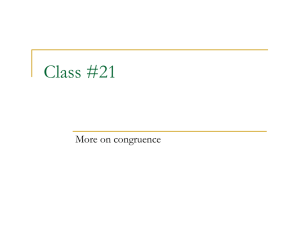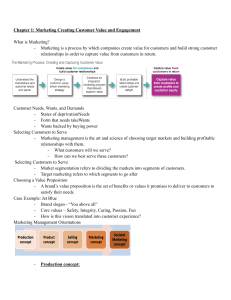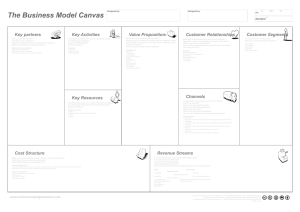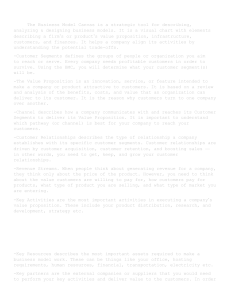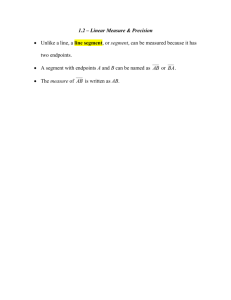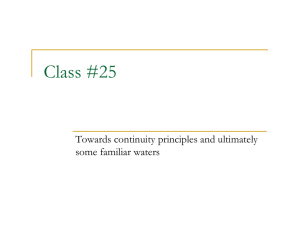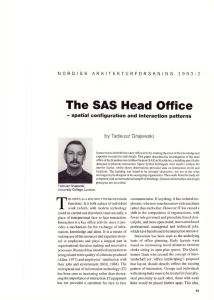Class #22 Congruence …
advertisement
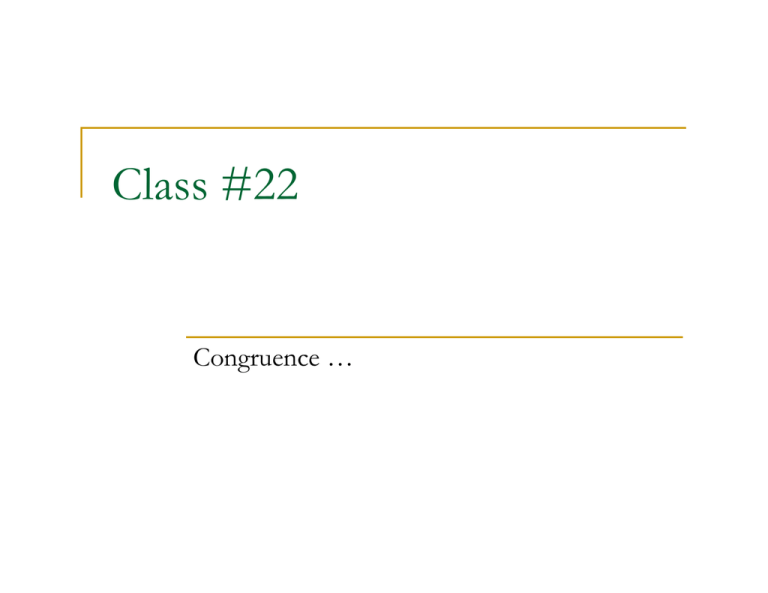
Class #22 Congruence … Model In the Cartesian plane we can define length of segments: A=(a1, a2) and B=(b1, b2), then ( (a − b ) 1 1 2 + (a2 − b2 ) 2 ) . Two segments are congruent iff they have equal length Two angles are congruent iff they have equal measures. c2 = a2 + b2 – 2ab·cos C, where a C b c SAS is independent of other axioms Use Cartesian plane, except the length of the segments whose endpoints are on the x-axis will be twice as long as they used to be. Does this satisfy C1-5 ? What about SAS ? Proposition 3.11 (Segment subtraction) If A*B*C and D*E*F, AB ≅ DE and AC ≅ DF, then BC ≅ EF. Proof on next homework. Proposition 3.12. If AC ≅ DF, then for any point B between A and C, there is a unique point E between D and F such that AB ≅ DE. Sketch of proof: By C1 there is a unique point E on DF such that AB ≅ DE. Either: D*E*F – done E=F – we have AB ≅ DE and AC ≅ DE, hence by C3 we have AB ≅ AC. Since B≠C, we have a contradiction to uniqueness in C1. D*F*E – then on the ray opposite to CA there is a unique point G such that CG ≅ EF. By C3, AG ≅ DE. Further, since AB ≅ DE we have that AB ≅ AG. We know that B≠C (since B*C*G by Prop. 3.3), again contradicting the uniqueness in C1. Comparing segments? Is there any way of telling when one segment is “smaller” then another without talking about length? Use only undefined terms we have. Definition: AB<CD if there exists a point E between C and D such that AB ≅ CE. When is AB ≮ CD? To contemplate for Friday: Proposition 3.13: 1. Exactly one of the following holds: AB < CD, AB≅CD, or AB>CD. 2. If AB<CD and CD ≅ EF, then AB<EF. 3. If AB<CD and AB ≅ EF, then EF<CD. 4. If AB<CD and CD<EF, then AB<EF.
